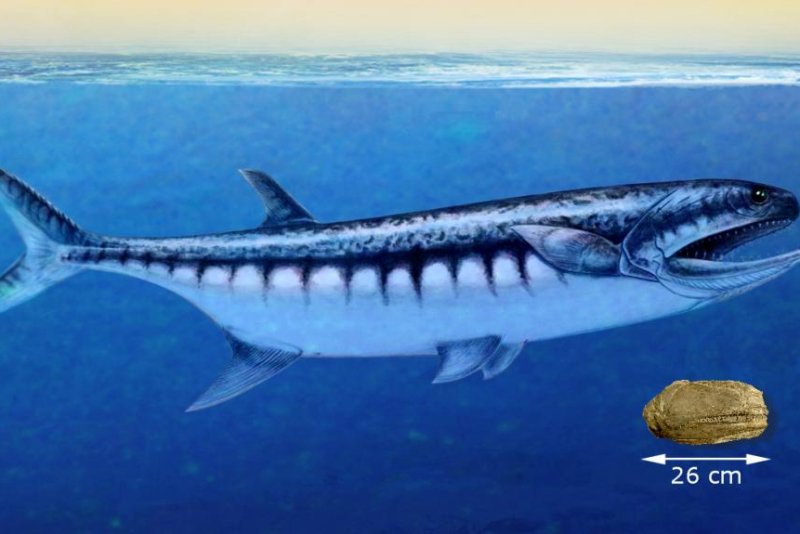Paleontologists say the newly discovered species hunted like great white sharks, biting their prey before swallowing them whole. Photo by Nadine Bösch/University of Zurich
July 26 (UPI) -- A team of American and Swiss paleontologists have identified one of the earliest large predatory fish species from the Triassic period. Scientists suggest the large-mouthed fish dominated the seas in the aftermath of the Permian-Triassic extinction event.
The extinction event separating the Permian and Triassic periods occurred 252 million years ago. It was the most devastating extinction event in the planet's history. Roughly nine out of every ten marine species perished.
But the latest discovery proves at least one sizable fish predator survived. The remains of Birgeria americana were found in Nevada. During the Triassic, Nevada and its neighbors were underwater.
Only a handful of vertebrate fossils hailing from the Early Triassic epoch have been recovered in the region.
Researchers described their novel discovery this week in the Journal of Paleontology.
"The surprising find from Elko County in northeastern Nevada is one of the most completely preserved vertebrate remains from this time period ever discovered in the United States," lead study author Carlo Romano said in a news release.
Birgeria species hunt like great white sharks, biting prey before swallowing them whole.
Scientists assumed the tops and bottoms of food chains were the most harmed by mass extinction events, but the latest discovery suggests large predators were capable of surviving the catastrophe.
Researchers also assumed equatorial seas were too hot for bony fish during the Early Triassic. Bony fish can't lay eggs in waters warmer than 36 degrees Celsius. The latest discovery suggests the equatorial seas were cooler than previously estimated.
"The vertebrates from Nevada show that previous interpretations of past biotic crises and associated global changes were too simplistic," Romano said.















